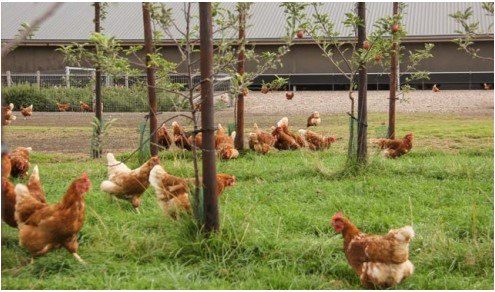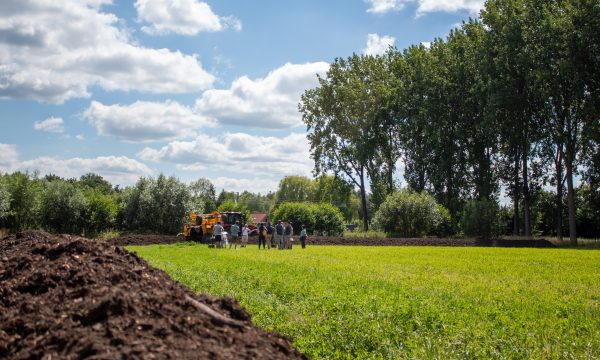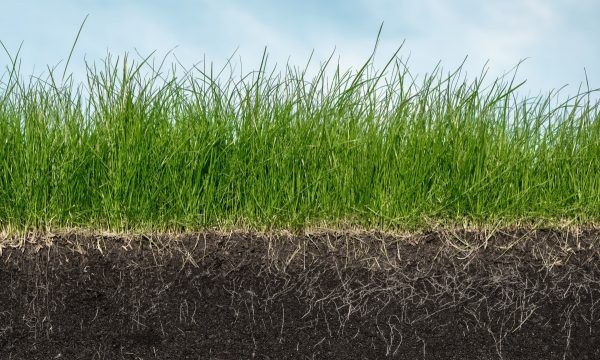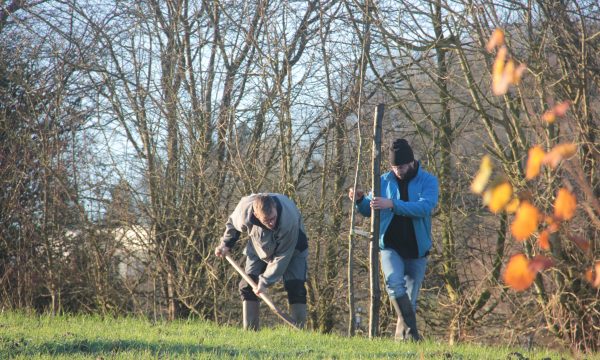In the media What can stimulate the scale-up of agroforestry in Flanders?

The majority of Flemish farmers are not considering agroforestry at the moment. A lack of certainty about profitability, suitability, knowledge and competences, but also a somewhat inadequate legal framework, inflexible support measures and a lack of broad support from the agricultural sector all impede growth of agroforestry systems. Removing these barriers requires a joint commitment from research institutes, governments, civil society organizations, (agricultural) companies and consumers. This is evident from the doctoral research of Lieve Borremans. "In order to get this - agroforestry as agro-ecological innovation in agriculture in Flanders – off the ground there are 5 aspects to tackle: more research and technological development, different earning and financing models, a better legal and policy framework, more knowledge sharing and education, wider support and a shared vision."
Slow scaling-up of agroforestry in Flanders
Trees provide a number of services to society, this is well-known: biodiversity, carbon storage, climate change, air purification. As a result, the last decade has seen farmers, policymakers and civil society organizations showing a growing interest in forest farming systems or agroforestry (agricultural crops or livestock farming purposefully combined with the cultivation of trees on the same plot). We already know from previous research that, provided the right choice of tree and provided correct maintenance of the tree trunk, the farmer can get either financial or practical benefit from the system: protection against erosion, risk diversification by diversifying income, creation of a favorable microclimate with functional biodiversity ...
Nevertheless, the roll-out of the system in Flemish agriculture is proceeding rather slowly. Between 2011 (start of subsidies for agroforestry) and 2018, only 130 ha of forestry have been added by about 40 farms. Despite the potential and despite existing subsidies, the broad agricultural sector is apparently still cautious about starting.
Five obstacles and five development paths to overcome them
Lieve Borremans presented the different barriers in her doctoral study. Through surveys, interviews and focus groups, she discovered various causes for the reticence of the agricultural sector with regard to this agro-ecological innovation. Farmers formulated technical, economic, institutional, organizational and social concerns and obstacles.
Five development processes can eliminate these according to the Borremans study:
Obstacle 1: lack of knowledge and useful tools. Development trajectory: investing in research and development.
With the exception of Paul Pardon's recent doctorate (ILVO-UGent), which measured the impact of trees on crop production, there is little knowledge available in Flanders about the long-term productivity and adaptability of agroforestry. Investment in further research together with pioneers and farmers is necessary to expand this knowledge. Borremans: "There is a need for interdisciplinary and transdisciplinary research projects aimed at creating long-term experimental plots or developing useful tools (machines, applications, etc.) for the planning, design and maintenance of agroforestry systems."
Obstacle 2: uncertainty about profitability. Development trajectory: creating different earning and financing models.
A lack of certainty about profitability is one of the most crucial barriers that prevents farmers from working with agroforestry. This uncertainty is caused by the fact that farmers have to wait a long time for income from wood production and that farmers are not compensated for the social services that the trees supply in the meantime (e.g. carbon storage). Borremans: "We must therefore focus on creating market mechanisms that enable farmers to valorise their efforts for the environment, landscape and biodiversity. Different types of instruments and arrangements are possible. Think for example of carbon trade, an agroforestry label that creates added value and a cooperative farm structure in which the consumer actively participates. In addition, companies, banks, consumers and the local community also have a role to play here.
Obstacle 3: lack of a clear legal framework and flexible support measures. Development trajectory: adjusting and improving the subsidy program and legal framework.
In recent years, the government has taken important steps to encourage the adoption of agroforestry by farmers. A subsidy program for the construction of agroforestry systems has been set up (up to 80% of the planting costs are reimbursed) and a suitable legal framework for cultivation has been developed. Borremans: "Both developments are positive, but there is a need for further adjustments and improvements in order to arrive at a fully-fledged legal framework and an attractive and effective subsidy program."
The government can also play a role in research, network and market development. In the Netherlands, this is done via GreenDeals, initiatives for sustainable growth in which the government and society interact from the start in an interactive way. In this way, the government wants to facilitate and accelerate the development of sustainable initiatives, while at the same time guiding future policy.
Obstacle 4: knowledge and expertise are not communicated effectively enough. Development trajectory: focusing on communication and education.
The knowledge of agroforestry among farmers and other stakeholders in the agricultural sector is limited and the expertise on the cultivation of trees in an agricultural context is spread over various organizations. For farmers it is therefore unclear where they can go with their questions. To remedy this, the knowledge built up in the VLAIO agroforestry project is bundled and made accessible in one central knowledge desk. Borremans: "In order to further disseminate this knowledge, communication and education of relevant actors remains important. They need to be well informed so that they become familiar with agro-ecological farming practices and their advantages for the community. "For example, agricultural education can contribute to this by focusing more on developing agro-ecological competences needed to manage complex cultivation systems. For farmers who are already interested, a learning network as recently established within the AFINET project can be a useful channel.
Obstacle 5: lack of support and shared vision. Development trajectory: dialogue and cooperation between the various parties involved.
Borremans' research shows that there are different views on the type of agroforestry that is desirable in Flanders. For example, there are stakeholders who believe that agroforestry in the context of Flanders can only be useful in the form of small landscape elements on the edge of parcels. Other stakeholders, on the other hand, also see potential in more complex forms in which trees and crops are sown closer together. Dialogue and cooperation between these groups should lead to a restoration of trust and the building of a common vision. There is also a need for broad social support. That is why the citizen / consumer also needs to be involved and informed, e.g. via a general course on 'agriculture and nutrition' in schools or through local initiatives that emphasize the link between the farmer and the consumer.
From barriers to stimuli through a shared commitment
Due to the existence of these barriers, agroforestry is currently not considered as a viable option by the majority of farmers. This emerged from a survey that was conducted among 86 farmers and was confirmed through two series of interviews and a number of focus groups with stakeholders. According to Borremans, the intention to start using agroforestry can only be increased if any of the aforementioned development processes are implemented. "The barriers can be effectively converted into stimuli. But for this, research institutes, governments, civil society organizations, (agricultural) businesses and consumers must jointly commit to work on more research and development, different earning and financing models, a clear legal framework and effective support measures, knowledge sharing, support creation and a shared vision. Only in this way can a level playing field arise in which agroforestry, as a socially valuable agricultural system, also becomes an attractive and valid option for farmers. In other words, this only creates opportunities for a sustainable upscaling of agroforestry in Flanders."
What now? Masterclasses this fall
Lieve Borremans' research is part of a broader VLAIO project 'Agroforestry Flanders' in which ILVO, Inagro, UGent, Belgian Soil Service and Agrobeheercentrum Eco² offer solutions and guidance to interested farmers. Paul Pardon's recent PhD on the agronomic and ecological impact of trees on an agricultural plot is also part of that broader project. Both PhDs and the accumulated knowledge about the application of forestry systems in Flanders within the Agroforestry Flanders consortium are being translated this year into concrete masterclasses for farmers, advisors, policy and other stakeholders. More info about that will follow later in February.


